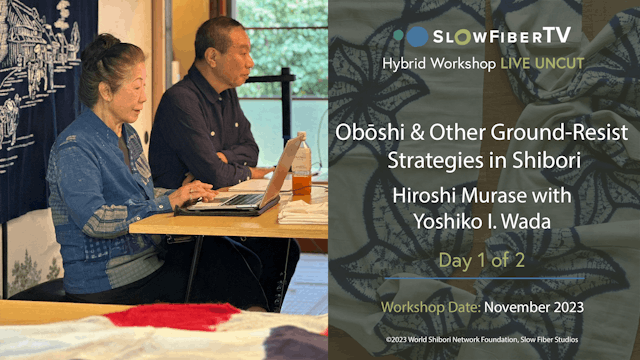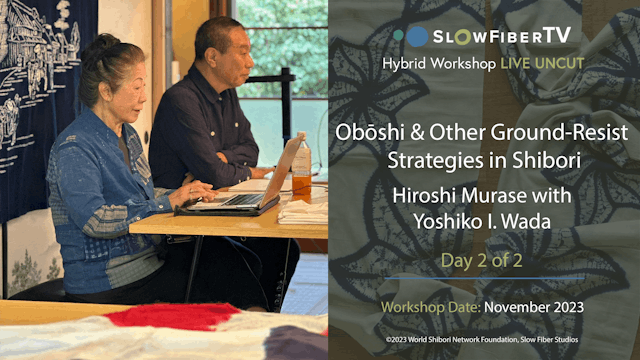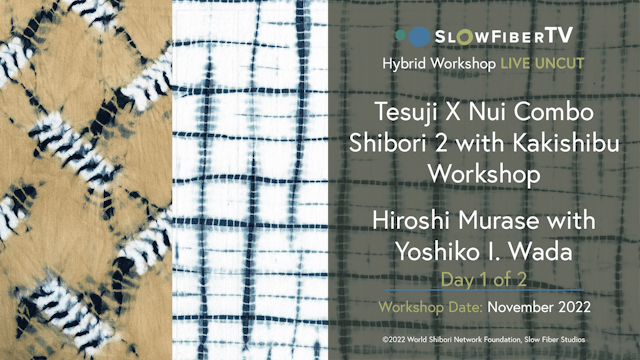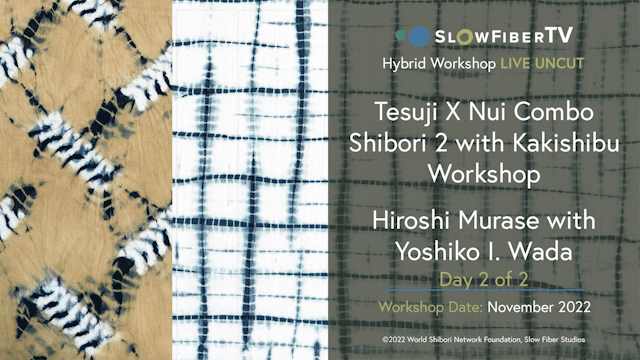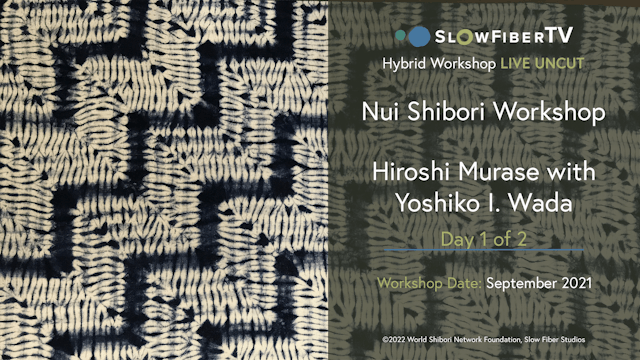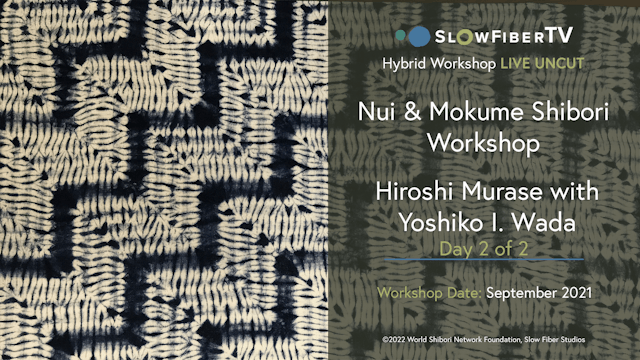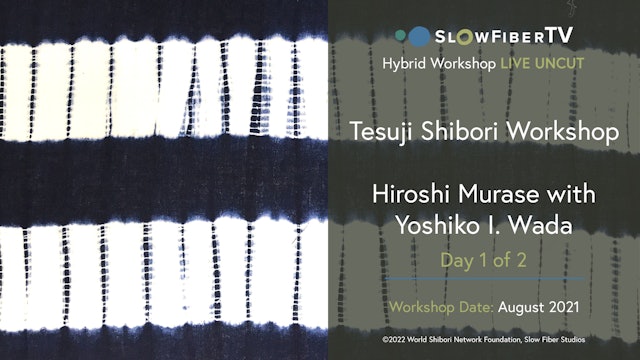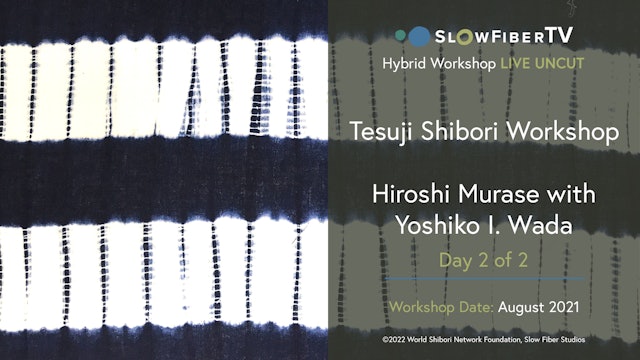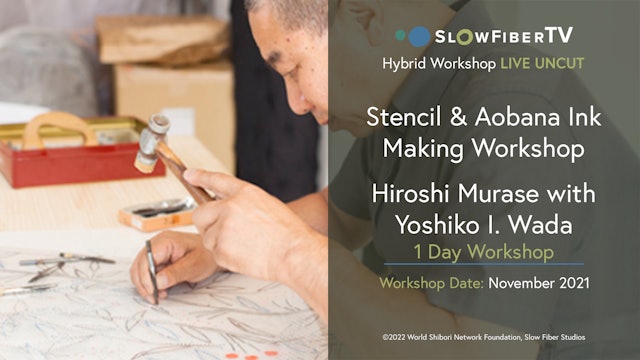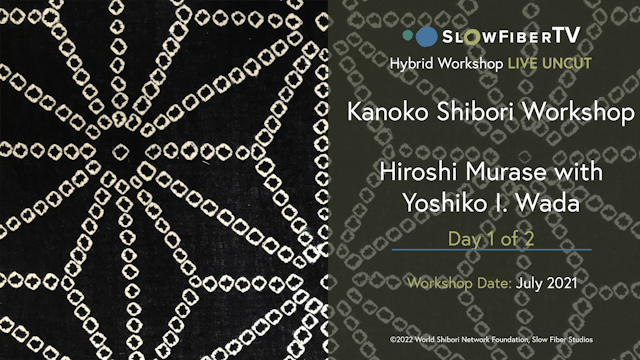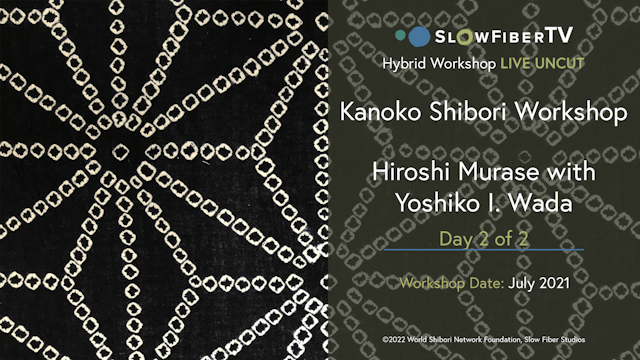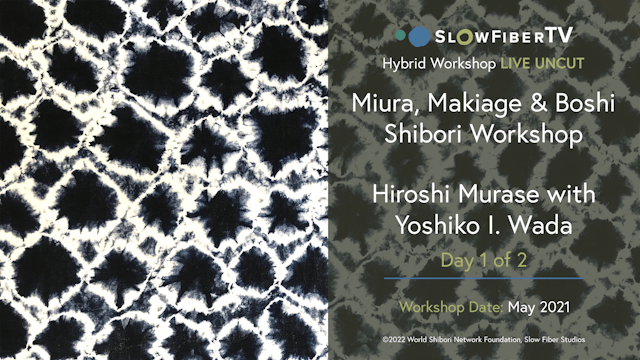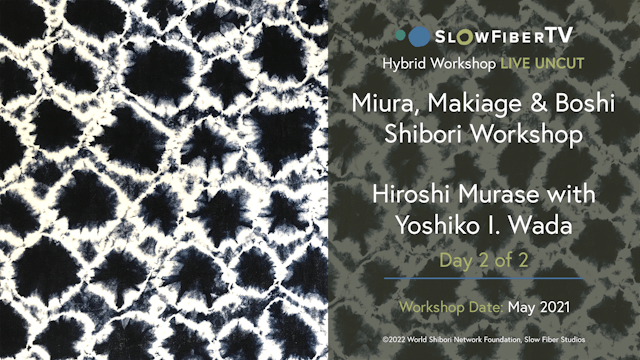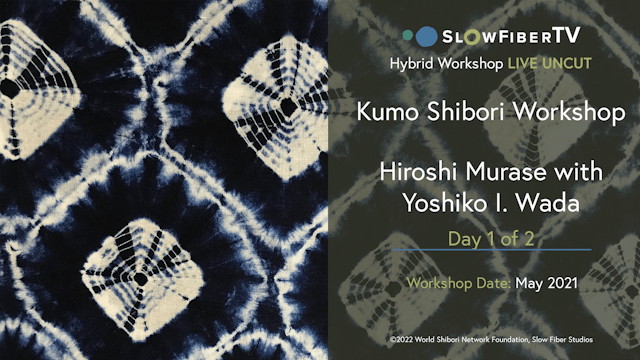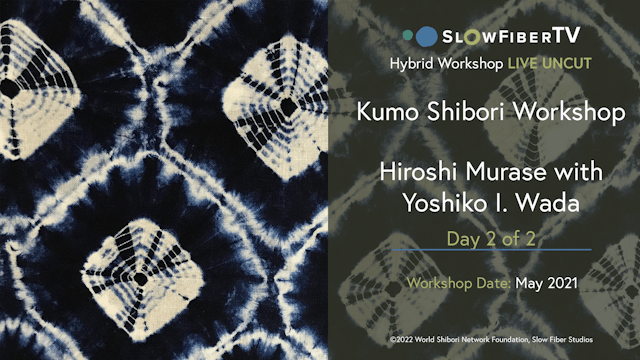Shibori WORKSHOPS by Hiroshi Murase with Yoshiko I. Wada - Rent LIVE UNCUT
-
Obōshi & Other Ground-Resist Strategies Day 1/2
2 items
Arimatsu, Japan has a 400-year history of shibori design and production. Around the Meiji era in Japan (early 1900’s), the Arimatsu artisans with their innovative techniques challenged the conventions of shibori at the time. Arimatsu shibori was often characterized by the white ground vs. the dar...
-
Oboshi & Other Ground-Resist Strategies, Day 2/2
2 items
Arimatsu, Japan has a 400-year history of shibori design and production. Around the Meiji era in Japan (early 1900’s), the Arimatsu artisans with their innovative techniques challenged the conventions of shibori at the time. Arimatsu shibori was often characterized by the white ground vs. the dar...
-
Tesuji X Nui with Kakishibu Day 1/2
4 items
Suggested Prerequisite: for those who have previously studied with Murase-San or with his Tesuji and Nui workshop streams.
-
Tesuji X Nui with Kakishibu Day 2/2
5 items
Suggested Prerequisite: for those who have previously studied with Murase-San or with his Tesuji and Nui workshop streams.
-
Stencil and Aobana Ink Making
1 item
One of Murase-san’s signature artisan skills: making fugitive ink and stencils to easily mark the design for a repeat pattern. Day 1 of 1

